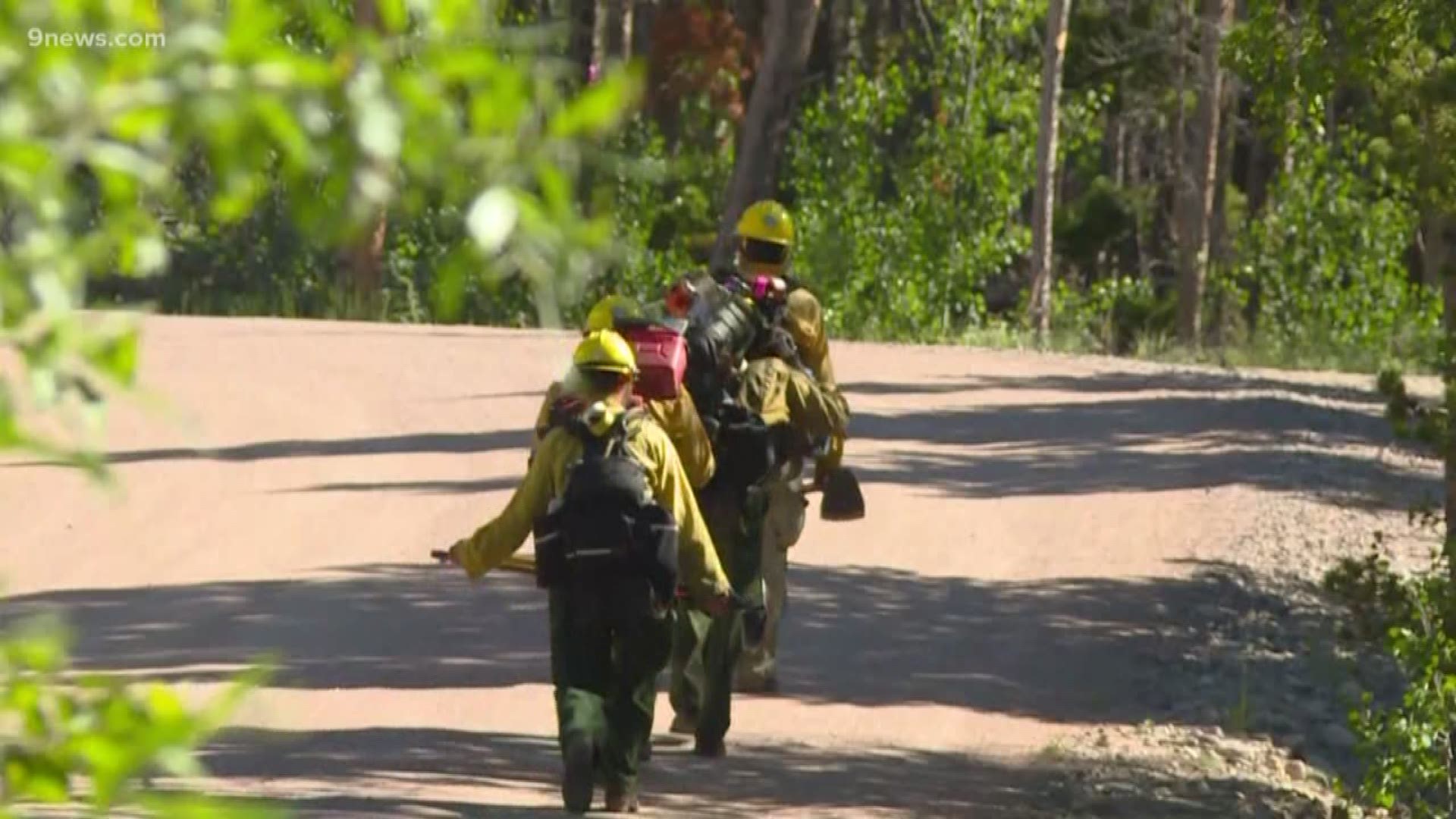KUSA - Colorado is no stranger to wildfires.
In 2018, the state spent more than $40 million fighting 18 of the biggest fires. In all, 6,184 wildland fires burned 250,297 acres across Colorado, according to State of Colorado-Division of Fire Prevention & Control.
The start of fire season in Colorado has been relatively slow this year. The snowpack, as well as a wet spring, has helped that. Still, fires like the Beaver Fire in Northern Colorado keep firefighters busy and using every technique they have to fight the flames.
More than 60 firefighters are battling the flames two hours outside Fort Collins as the fire grows to nearly 100 acres.
We asked Tim Griffin, one of the incident commanders for the US Forest Service, to walk us through the different techniques firefighters use to help put out the flames.
(Editor's note: Responses have been edited for context and clarity.)
9NEWS: What makes fighting forest fires so challenging compared to other types of fires?
Griffin: The terrain, the remoteness, the fuels, all of that adds to the complexity of the fire. As the fire grows in size as well, then obviously the complexity increases. Access into the fire, the condition of the fuels, the weather going in and out of drier days and windier days, all those definitely add to the complexity of the fire.
When do you use helicopters to help fight the fire?
We have two helicopters we are using on the Beaver Fire. The main use on this fire is suppressing the fire. Basically just keeping the fire where it is and where we want it to be. But we also use the helicopter for logistical support.
Why do you burn land that makes the fire grow in acreage when you are trying to contain it?
We did some burnouts and we brought fire out to those control lines for a more favorable spot where we felt long term we’d have the most success. Maybe it’s in a place that we don’t want to commit firefighters due to firefighter safety. We will put in an indirect line which leaves some green, unburned fuel in between the fire and that line and then we’ll go in with drip torches.
In what situations would you use this technique?
We just decide when we’re going to bring fire out to that line on our terms when we want to. Sometimes maybe if we put the fire out right where it’s at, we may put it out right then, but maybe as we go into a drying trend, maybe it’s just not a great place to stop the fire.
What other tools do you use? I know there is also a team of spotters keeping an eye on the fire from above.
We use chainsaws. We’ll cut a saw line through to remove all that vegetation that will burn. Behind the chainsaws, we’ll bring in folks who will dig a line down to mineral soil that won’t burn.
SUGGESTED VIDEOS | Local stories from 9NEWS

